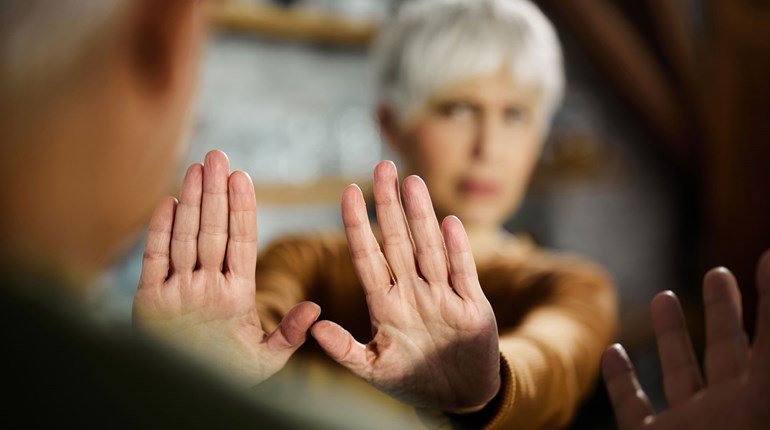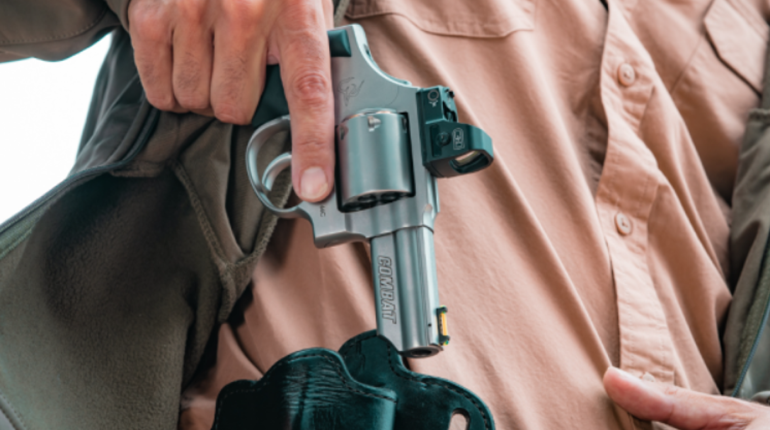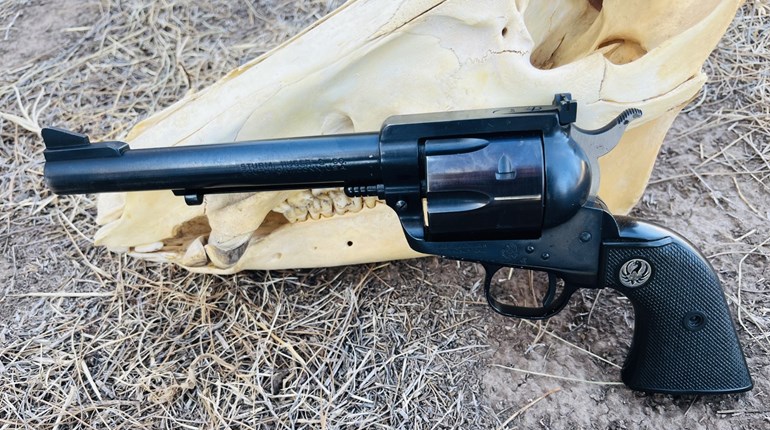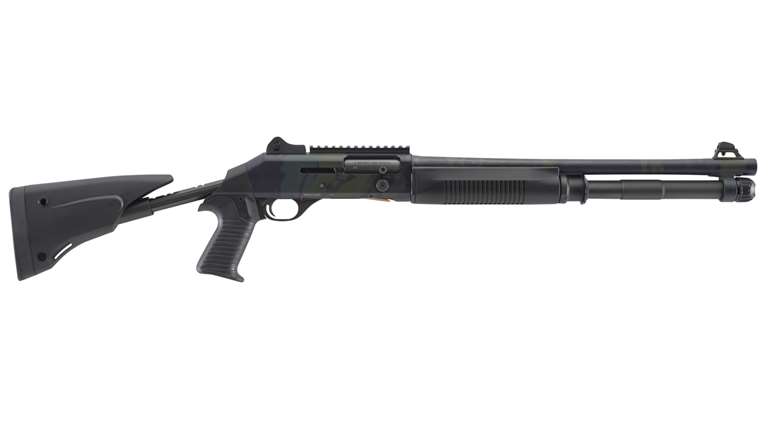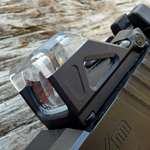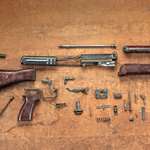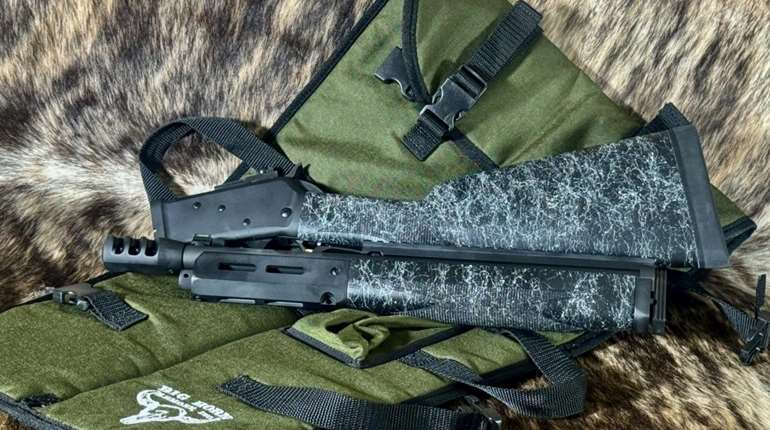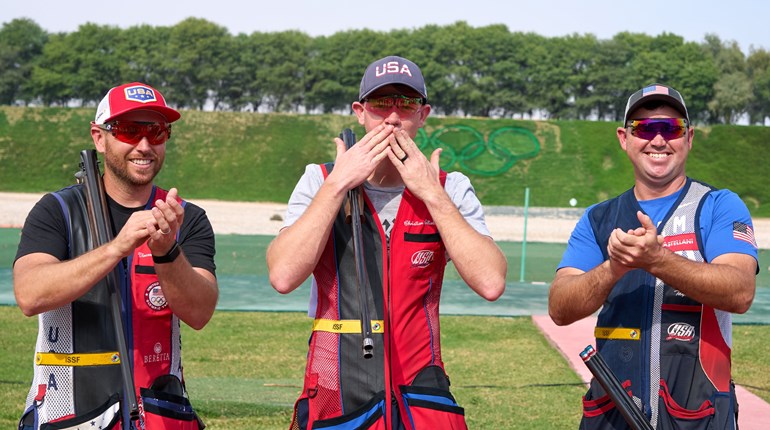
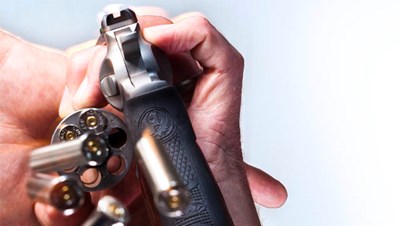 When you visit with as many shooters as I do, at trade shows, gun shows and shooting ranges, one thing quickly becomes clear: The double-action revolver is still a very popular defensive tool. Even those who carry a semi-automatic as their primary weapon will often choose the revolver as a backup or deep-cover gun.
When you visit with as many shooters as I do, at trade shows, gun shows and shooting ranges, one thing quickly becomes clear: The double-action revolver is still a very popular defensive tool. Even those who carry a semi-automatic as their primary weapon will often choose the revolver as a backup or deep-cover gun.
All of this makes perfectly good sense because the revolver is generally accurate, extremely reliable and comes chambered in powerful defensive calibers. Some will suggest the revolver's limited ammunition capacity is a detriment, but this argument is often an exaggeration. Most gunfights, especially those involving civilians, are usually over with just two or three shots fired. Still, no one has any interest in becoming the exception to the rule. For that reason, just as with any defensive firearm, you need to know how to quickly reload your revolver when it goes empty (speed reload) and how to top it off if there is a lull in the fight (tactical reload).
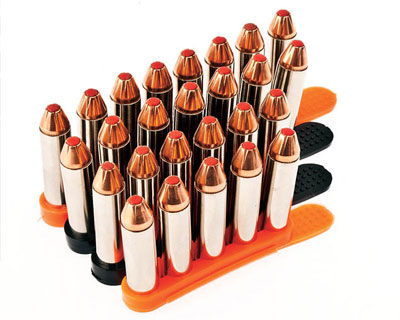
Generally, it is recommended for the defensive shooter to carry at least one reload along with the loaded handgun. For the revolver, I strongly believe two reloads are more appropriate. The first would be some sort of speedloader capable of recharging a completely empty cylinder with one stroke. For years I have used HKS Speedloaders that feature a twist knob on the topside. However, there are other good options, such as those available from Safariland.
The second reload should be carried in a dump pouch. I prefer the kind with compartments that hold two cartridges in each hole. A number of companies offer them, and I have experience with models manufactured by Galco and El Paso Saddlery. A dump pouch is better than an exposed-cartridge belt slide, because when closed none of the rounds are visible.
A third option for carrying extra ammo is in the form of plastic strips that usually carry six extra rounds. Bianchi's product is the Speed Strip and Tuff Products' version is called the QuickStrip. Both are good choices. Cartridges are held in place by their rims and can be peeled away from the plastic strips as they are inserted into the chambers of a revolver. They are not as fast to use as a speedloader or a dump pouch, but they have the advantage of lying flat in a pocket, out of the way and out of sight.
Speed Load
There are several ways to perform a speed load with the revolver. Many competitors use a method where the handgun is never out of the shooter's dominant hand. Right-handed shooters maintain a shooting grip while they open the cylinder, elevate the muzzle and hit the ejector rod with the left palm to dump empty cases. The left hand then takes the speedloader from the belt and recharges the weapon once the muzzle is pointed downward. I have some problems with this technique when it is used in a defensive situation.
First, the shooter is using his weak hand to manipulate the speedloader when, in fact, a lot of fine-motor skills come into play. Loading with the strong hand minimizes fumbling. Second, if the shooter falls or is knocked down, both gun and ammo are more likely to get jarred from his grip. For the defensive shooter, there is a better way.
A much more secure and reliable technique is for the shooter to cup the revolver in the palm of the left hand. As he opens the cylinder with his right thumb, the revolver is cradled in the left palm and supported by the left index finger and little finger. The two middle fingers push the cylinder out of its seat in the frame. At this point, the cylinder is securely held by the two middle fingers protruding through the frame and the thumb.
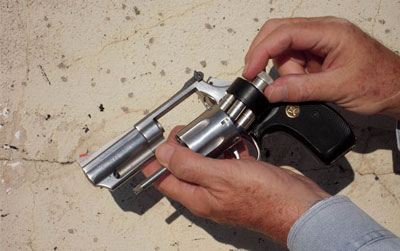
The shooter then turns the muzzle skyward and uses the palm of his right hand to smartly smack the ejector rod, causing the cartridges to fall clear of the cylinder. It's a good idea to use the palm of the right hand, instead of the left thumb, because expelling brass might become extremely difficult due to the cases becoming fire-formed in the chambers. As a result, you may not have enough strength to force them clear of the cylinder using only your thumb. Turning the muzzle downward, the speedloader is then drawn from the belt or pocket, and the handgun is recharged.
A couple of tips concerning speedloaders is appropriate at this point. I find it helps if you identify the two chambers in the 10- and 11-o'clock positions and start those bullet noses in first. The rest of the cartridges will then be properly lined up with their corresponding chamber and the whole operation will be much faster and smoother.
The second thing about a speedloader is you need to get rid of it as quickly as you can. Once the device is activated and the cartridges are seated in the chambers, just let go of it, close the cylinder and get back in the fight. I've seen shooters hang on to the speedloader and try to drop it on the ground or put it in an available pocket—wasting precious time. Just activate the device and let it fall. You can pick it up later, after peace is restored.
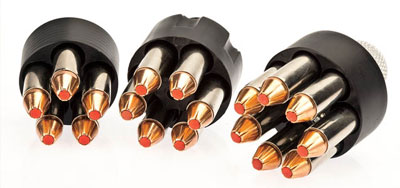
Lately, full-moon clips have become popular with some wheelguns chambered in certain calibers. One only has to watch Jerry Miculek charging his .45 ACP revolver to know these can give you an even faster reload. The technique is the same, however, you don't have a speedloader to fumble with.
Tactical Reload
In the tactical revolver reload, the handgun is opened and held as already mentioned. With the muzzle down, the left thumb pushes the ejector rod just enough so the cartridges begin to rise out of their chambers. The shooter then plucks the empties out with the fingers of his right hand and lets them drop clear of the handgun. The right hand then draws fresh ammo from the dump pouch and recharges the empty chambers. With practice, two cartridges can be managed simultaneously, speeding the process.
In a defensive situation, it is important for the shooter to keep an eye on what is going on around him while recharging his handgun. You may see competitive shooters reloading at belt level, with their heads down, keeping an eye on the whole process. This is fine in a match, because no one is trying to kill us. However, gunfights are dynamic, dangerous, moving events and it pays to know what the bad guys are doing while you are occupied. I guarantee they aren't going to be standing patiently in the last place you saw them.
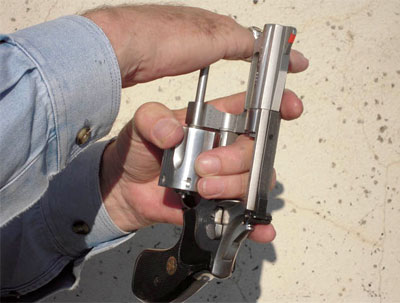
For this reason, speed and tactical reloads should be done with the revolver high enough for the shooter to keep his head up while staying aware of what is going on. "High enough" means at least chest level, but not so high that it blocks your vision. The arms should be bent and the handgun should be held fairly close to the body. Imagine the position you would take when trying to thread a needle, which should be about right. In short, you want to bring the ammo to the gun instead of taking the gun to the ammo.
Another advantage to this method of reloading the revolver is it gives you a secure hold on the handgun at all times. Should you be hit or otherwise knocked down, the revolver and ammo will likely go right down with you instead of being flung several feet away. If you are able, you may still get that reload done from the ground and get back in the fight.
It may appear I have ignored left-handed shooters completely. However, being left-handed, I can tell you this is the best technique for us southpaws, too. Holding the revolver securely in the left hand and loading with the right is still the best and quickest way to go. Besides, we left-handed folks have grown up in this right-handed world. We know how to adapt.
Shooters should understand and accept the fact that reloading a revolver is a bit more complicated than just slamming another magazine into a semi-automatic pistol. What that means is one has to practice a lot more. The serious shooter will buy some dummy rounds of ammunition and dedicate time—several times a week—to practicing his speed load and tactical load.
Most people can learn to manage the speed load with a semi-automatic without ever looking at the pistol. However, most revolver shooters are at least going to have to glance at their gun during the process. Practice, however, will help the shooter keep this to a minimum.
Not long ago, I spent an enjoyable three days with some folks on the West Coast, helping them improve their defensive skills. The first two days were spent with semi-automatic pistols and it was clear they had been studying and practicing. The third day was dedicated to pocket revolvers. On that day, you would have thought that it was an entirely different class. Loaded speedloaders were hitting the ground, loose ammo was flying everywhere and hardly anyone was getting back in the game with any speed.
One of the shooters finally told me it must be pretty obvious they trained with their semi-automatics and then just carried their revolvers on the street.
It is important to practice with the revolver because, good or bad, we are most likely going to fight like we train. Bill Jordan told the story of one Border Patrolman who got into a nasty little firefight down on the Rio Grande. When the fight was over and the patrolman was being debriefed, his supervisor noticed a bulge in the fellow's trouser pockets. The patrolman didn't have a clue what was causing this divergence from the orderly and neat appearance required by regulations. Running his hand down in his pocket, he came out with a handful of empty .38 Spl. brass.
You see, this Border Patrolman was a handloader and, during his practice sessions, he always dumped empties into his hand and dropped them in his pocket. During the gunfight, he did as he had practiced, even though saving brass was probably the last thing on his mind.
With proper technique and taking the time to faithfully practice it, the revolver shooter can turn the old wheelgun into an efficient defensive tool that will save his life. And that's what it's all about.













